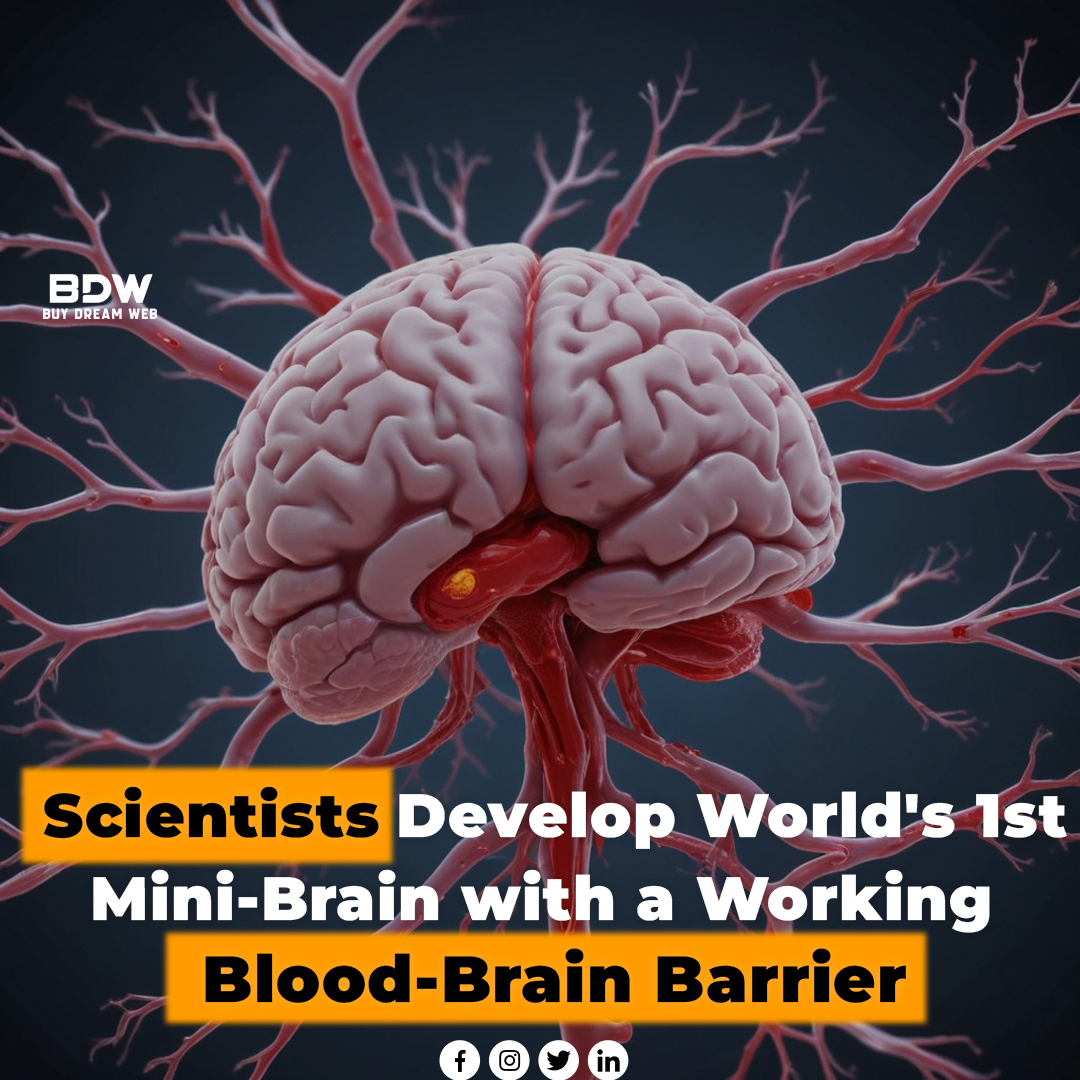Researchers Make Mini-Brains with Working Blood-Brain Barriers—A Brain Advancement
Since the human brain is the most complicated organ in our body, scientists have dedicated their lives to learning more about it. The construction of the world's first mini-brain, replete with a working blood-brain barrier (BBB), has just marked a significant milestone. This discovery, made by a group lead by Cincinnati Children's Hospital researchers and published in the journal Cell Stem Cell on May 15, 2024, has enormous potential to transform our knowledge of and approach to treating neurological illnesses.
How Do Mini-Brains Work?
Brain organoids, another name for mini-brains, are three-dimensional, lab-grown entities that closely resemble the anatomical and functional characteristics of the human brain. By encouraging stem cells to differentiate into distinct brain cell types, these microscopic models are produced, which enables researchers to examine brain function, development, and disease processes in a controlled setting.
How Important the Blood-Brain Barrier Is
The brain is shielded from dangerous chemicals flowing through the circulation by the highly selective blood-brain barrier. It functions as a filter, permitting the passage of vital nutrients while blocking the entry of pollutants, infections, and some drugs. Treatments for a variety of neurological conditions, such as stroke, Parkinson's disease, and Alzheimer's disease, must take into account the BBB.
The Difficulty: Copying the Blood-Brain Divide
The lack of a functioning blood-brain barrier has been a significant barrier to mini-brains' ability to provide insightful information about brain function. The intricate cellular architecture and tight connections required to accurately represent this crucial barrier were absent from earlier models. This meant that researching the ways in which medications affect the brain and creating therapies that can successfully pass through the blood-brain barrier remained difficult.
Cincinnati's Breakthrough: Piecing It Together
This obstacle was overcome by the Cincinnati research team by developing what they refer to as "BBB assembloids." This novel method combines two different kinds of organoids:
Brain organoids: These are cells that closely resemble the structure of the human brain.
Blood vessel organoids: These imitate the form and operation of cerebral blood vessels.
These two organoid kinds were carefully combined by the researchers to produce a mini-brain with a functioning BBB. This is a noteworthy development in the study of the brain.
The Possible Repercussions of This Discovery
The creation of miniature brains with a functioning blood-brain barrier presents fascinating new avenues for drug discovery and neurological research:
Better Drug Testing: Using these miniature brains, researchers can now test possible medications to see whether they can successfully penetrate the blood-brain barrier and reach their intended location inside the brain. This has the potential to greatly speed up the creation of novel treatments for neurological illnesses.
Modeling Neurological Diseases: By simulating a variety of neurological conditions, these miniature brains enable researchers to examine how these conditions impact the blood-brain barrier and create specialized therapies.
Personalized Medicine: These models might eventually be used to build mini-brains tailored to each patient, enabling medical professionals to test possible therapies on individual individuals before implementing them.
Taking a Look Ahead: The Prospects for Brain Research
The development of mini-brains with a functioning blood-brain barrier is a major advancement in neuroscience. This discovery offers up new avenues for the study and treatment of brain disorders, even if there are still obstacles to be addressed, such as growing the intricacy and scale of these models. Millions of people's lives might be improved by using these little brains as vital instruments in the battle against neurological illnesses with further study.
Beyond the Headlines: Your Implications from This
Even though this research is still in its early phases, it is a step in the right direction toward creating more effective therapies for neurological illnesses. This may lead to earlier diagnosis, better drugs, and possibly even treatments for diseases that are presently incurable. For the millions of patients and their families dealing with these crippling diseases, this discovery gives hope.
There is still much to learn about and do to cure the human brain. Nonetheless, a noteworthy advancement is the creation of miniature brains with a functioning blood-brain barrier. It is evidence of the commitment and creativity of researchers throughout the globe, opening doors for more promising developments in brain research and better healthcare for everybody.





Comments